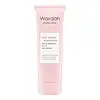What's inside
What's inside
 Key Ingredients
Key Ingredients

 Benefits
Benefits

 Concerns
Concerns

 Ingredients Side-by-side
Ingredients Side-by-side

Water
Skin ConditioningGlycerin
HumectantNiacinamide
SmoothingButylene Glycol
HumectantCaprylic/Capric Triglyceride
MaskingPunica Granatum Fruit Extract
AntioxidantPropylene Glycol
HumectantAmmonium Acryloyldimethyltaurate/Vp Copolymer
Dimethicone
EmollientBetaine
HumectantGlycereth-26
HumectantIsopropyl Palmitate
Emollient1,2-Hexanediol
Skin ConditioningHydroxyacetophenone
AntioxidantCetearyl Alcohol
EmollientPolyacrylate-13
Allantoin
Skin ConditioningButyrospermum Parkii Butter
Skin ConditioningCentella Asiatica Extract
CleansingDimethyl Isosorbide
SolventPolyisobutene
Parfum
MaskingSodium Hyaluronate
HumectantXanthan Gum
EmulsifyingHydroxypinacolone Retinoate
Skin ConditioningPentylene Glycol
Skin ConditioningPolysorbate 20
EmulsifyingSorbitan Isostearate
EmulsifyingRosa Hybrid Flower Extract
Skin ConditioningNonapeptide-1
Skin ConditioningTetrapeptide-1
Skin ConditioningGardenia Florida Fruit Extract
Skin ConditioningCI 16185
Cosmetic ColorantWater, Glycerin, Niacinamide, Butylene Glycol, Caprylic/Capric Triglyceride, Punica Granatum Fruit Extract, Propylene Glycol, Ammonium Acryloyldimethyltaurate/Vp Copolymer, Dimethicone, Betaine, Glycereth-26, Isopropyl Palmitate, 1,2-Hexanediol, Hydroxyacetophenone, Cetearyl Alcohol, Polyacrylate-13, Allantoin, Butyrospermum Parkii Butter, Centella Asiatica Extract, Dimethyl Isosorbide, Polyisobutene, Parfum, Sodium Hyaluronate, Xanthan Gum, Hydroxypinacolone Retinoate, Pentylene Glycol, Polysorbate 20, Sorbitan Isostearate, Rosa Hybrid Flower Extract, Nonapeptide-1, Tetrapeptide-1, Gardenia Florida Fruit Extract, CI 16185
Water
Skin ConditioningGlycerin
HumectantSodium Laureth Sulfate
CleansingCocamidopropyl Betaine
CleansingPropylene Glycol
HumectantAcrylates Copolymer
Sodium PCA
HumectantDecyl Glucoside
CleansingPhenoxyethanol
PreservativeSodium Lauroyl Sarcosinate
CleansingSodium Chloride
MaskingCitric Acid
BufferingSodium Hydroxide
BufferingChlorphenesin
AntimicrobialGlyceryl Polyacrylate
Brassica Campestris Seed Oil
Skin ConditioningDisodium EDTA
Saccharide Isomerate
HumectantParfum
MaskingRose Extract
Skin ConditioningSodium Citrate
BufferingTocopherol
AntioxidantWater, Glycerin, Sodium Laureth Sulfate, Cocamidopropyl Betaine, Propylene Glycol, Acrylates Copolymer, Sodium PCA, Decyl Glucoside, Phenoxyethanol, Sodium Lauroyl Sarcosinate, Sodium Chloride, Citric Acid, Sodium Hydroxide, Chlorphenesin, Glyceryl Polyacrylate, Brassica Campestris Seed Oil, Disodium EDTA, Saccharide Isomerate, Parfum, Rose Extract, Sodium Citrate, Tocopherol
 Reviews
Reviews

Ingredients Explained
These ingredients are found in both products.
Ingredients higher up in an ingredient list are typically present in a larger amount.
Glycerin is already naturally found in your skin. It helps moisturize and protect your skin.
A study from 2016 found glycerin to be more effective as a humectant than AHAs and hyaluronic acid.
As a humectant, it helps the skin stay hydrated by pulling moisture to your skin. The low molecular weight of glycerin allows it to pull moisture into the deeper layers of your skin.
Hydrated skin improves your skin barrier; Your skin barrier helps protect against irritants and bacteria.
Glycerin has also been found to have antimicrobial and antiviral properties. Due to these properties, glycerin is often used in wound and burn treatments.
In cosmetics, glycerin is usually derived from plants such as soybean or palm. However, it can also be sourced from animals, such as tallow or animal fat.
This ingredient is organic, colorless, odorless, and non-toxic.
Glycerin is the name for this ingredient in American English. British English uses Glycerol/Glycerine.
Learn more about GlycerinParfum is a catch-all term for an ingredient or more that is used to give a scent to products.
Also called "fragrance", this ingredient can be a blend of hundreds of chemicals or plant oils. This means every product with "fragrance" or "parfum" in the ingredients list is a different mixture.
For instance, Habanolide is a proprietary trade name for a specific aroma chemical. When used as a fragrance ingredient in cosmetics, most aroma chemicals fall under the broad labeling category of “FRAGRANCE” or “PARFUM” according to EU and US regulations.
The term 'parfum' or 'fragrance' is not regulated in many countries. In many cases, it is up to the brand to define this term.
For instance, many brands choose to label themselves as "fragrance-free" because they are not using synthetic fragrances. However, their products may still contain ingredients such as essential oils that are considered a fragrance by INCI standards.
One example is Calendula flower extract. Calendula is an essential oil that still imparts a scent or 'fragrance'.
Depending on the blend, the ingredients in the mixture can cause allergies and sensitivities on the skin. Some ingredients that are known EU allergens include linalool and citronellol.
Parfum can also be used to mask or cover an unpleasant scent.
The bottom line is: not all fragrances/parfum/ingredients are created equally. If you are worried about fragrances, we recommend taking a closer look at an ingredient. And of course, we always recommend speaking with a professional.
Learn more about ParfumPropylene Glycol is an odorless, colorless liquid. As a humectant, it helps skin retain moisture. It also aids in delivering active ingredients.
Another role of this ingredient is preventing a product from melting or freezing. Propylene glycol also adds antimicrobrial properties to a product, elongating product lifespan.
This ingredient is considered an organic alcohol and commonly added into both cosmetics and foods.
Those with sensitive skin or conditions may develop a rash when using this ingredient.
Learn more about Propylene GlycolWater. It's the most common cosmetic ingredient of all. You'll usually see it at the top of ingredient lists, meaning that it makes up the largest part of the product.
So why is it so popular? Water most often acts as a solvent - this means that it helps dissolve other ingredients into the formulation.
You'll also recognize water as that liquid we all need to stay alive. If you see this, drink a glass of water. Stay hydrated!
Learn more about Water